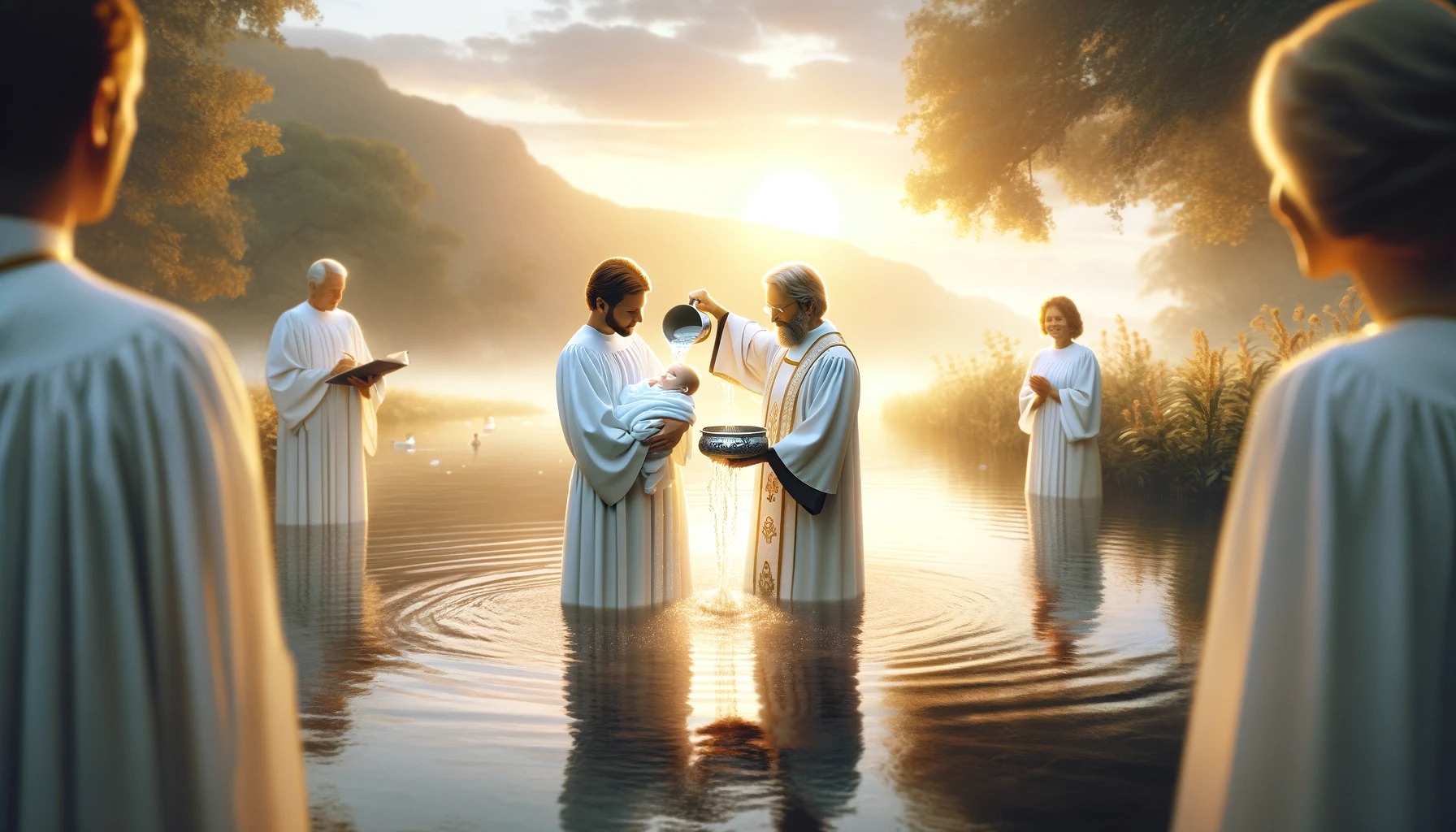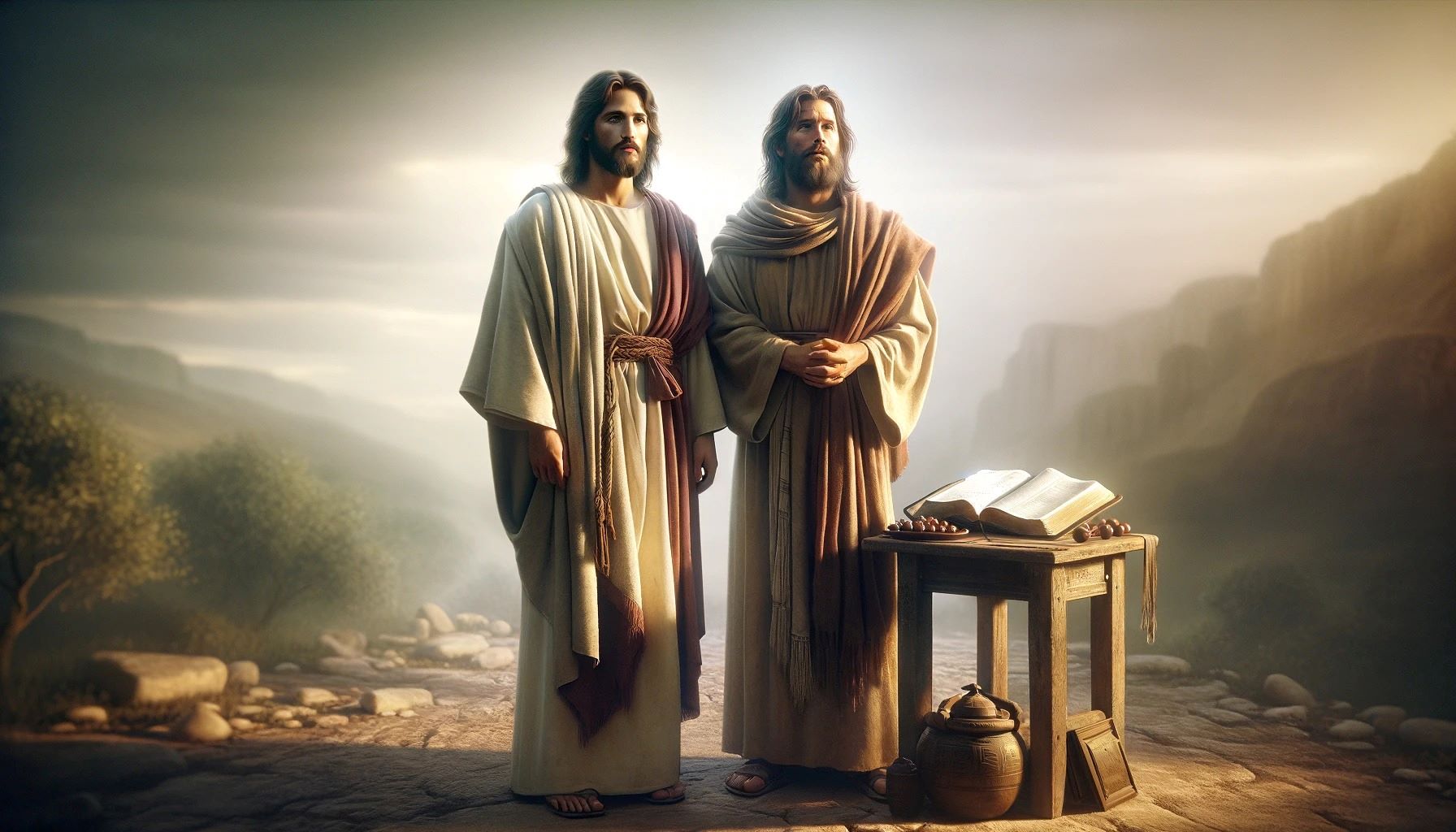Home>Special Themes>How Are Lent And Easter Related


Special Themes
How Are Lent And Easter Related
Published: February 29, 2024
Peter Smith, Editorial Director at Christian.net, combines deep insights into faith, politics, and culture to lead content creation that resonates widely. Awarded for his contributions to religious discourse, he previously headed a major organization for religious communicators, enhancing dialogue on faith's societal impacts.
Discover the connection between Lent and Easter, and how these special themes are related in Christian traditions. Explore the significance and symbolism behind these important religious observances.
(Many of the links in this article redirect to a specific reviewed product. Your purchase of these products through affiliate links helps to generate commission for Christian.net, at no extra cost. Learn more)
Table of Contents
The Significance of Lent
Lent holds great significance in the Christian faith as it is a period of reflection, repentance, and preparation for the celebration of Easter. It is a time for Christians to remember the 40 days that Jesus spent fasting in the wilderness, enduring temptation, and preparing for his ministry. The season of Lent is a solemn and reflective time, during which believers are encouraged to engage in self-examination, prayer, and acts of self-denial. It serves as a spiritual journey that leads to the joyous celebration of Easter, marking the resurrection of Jesus Christ. Lent is a time for believers to draw closer to God, to seek forgiveness for their shortcomings, and to renew their commitment to living a life of faith and obedience.
Read more: How Is Almsgiving Related To Lent
The History of Lent
-
Early Origins: The observance of Lent can be traced back to the early centuries of the Christian church. The duration of Lent has varied throughout history, with different regions and traditions observing it for different lengths of time. However, the 40-day period of fasting and preparation has been a consistent theme, symbolizing the time Jesus spent in the wilderness.
-
Development of Practices: Over time, the church established specific practices and disciplines for the Lenten season, including fasting, prayer, and almsgiving. These practices were intended to help believers focus on their spiritual lives and deepen their relationship with God.
Practices and Traditions of Lent
-
Fasting: One of the most well-known practices of Lent is fasting, which often involves abstaining from certain foods or meals. This act of self-denial is meant to remind believers of the sacrifices made by Jesus and to foster a spirit of discipline and self-control.
-
Prayer: Lent is a time for increased prayer and spiritual reflection. Many churches hold special services and prayer gatherings during this season, providing opportunities for believers to come together in worship and supplication.
-
Almsgiving: Acts of charity and generosity are also emphasized during Lent. Believers are encouraged to give to those in need, following the example of Jesus's compassion and love for others.
Lent is a time of spiritual renewal and growth, inviting believers to recommit themselves to their faith and to prepare their hearts for the celebration of Easter. It serves as a period of introspection and devotion, guiding Christians on a journey of faith that culminates in the joy of the resurrection.
The History of Lent
-
Early Origins: The observance of Lent can be traced back to the early centuries of the Christian church. The duration of Lent has varied throughout history, with different regions and traditions observing it for different lengths of time. However, the 40-day period of fasting and preparation has been a consistent theme, symbolizing the time Jesus spent in the wilderness.
-
Development of Practices: Over time, the church established specific practices and disciplines for the Lenten season, including fasting, prayer, and almsgiving. These practices were intended to help believers focus on their spiritual lives and deepen their relationship with God.
The history of Lent is deeply rooted in the early traditions of the Christian church. Its origins can be traced back to the early centuries, and its practices have evolved over time to become the solemn and reflective period that it is today. Understanding the historical development of Lent provides insight into its significance and the ways in which it has shaped the faith and spirituality of believers throughout the centuries.
Practices and Traditions of Lent
-
Fasting: One of the most well-known practices of Lent is fasting, which often involves abstaining from certain foods or meals. This act of self-denial is meant to remind believers of the sacrifices made by Jesus and to foster a spirit of discipline and self-control.
-
Prayer: Lent is a time for increased prayer and spiritual reflection. Many churches hold special services and prayer gatherings during this season, providing opportunities for believers to come together in worship and supplication.
-
Almsgiving: Acts of charity and generosity are also emphasized during Lent. Believers are encouraged to give to those in need, following the example of Jesus's compassion and love for others.
Lent is a time of spiritual renewal and growth, inviting believers to recommit themselves to their faith and to prepare their hearts for the celebration of Easter. It serves as a period of introspection and devotion, guiding Christians on a journey of faith that culminates in the joy of the resurrection.
Read more: How Does Mardi Gras Related To Lent
The Meaning of Easter
Easter holds profound significance in the Christian faith as it commemorates the resurrection of Jesus Christ from the dead. It is the culmination of the Holy Week, which begins with Palm Sunday, marking Jesus's triumphant entry into Jerusalem, and includes Maundy Thursday, when he shared the Last Supper with his disciples, and Good Friday, which commemorates his crucifixion. Easter Sunday celebrates the victory of Jesus over death, signifying hope, redemption, and the promise of eternal life for believers. The resurrection is central to the Christian belief, representing the ultimate triumph of good over evil and the fulfillment of God's plan for salvation. Easter is a time of joyous celebration, as it reaffirms the core tenets of the Christian faith and serves as a source of inspiration and renewal for believers around the world.
Easter is a time of great rejoicing for Christians, as it symbolizes the victory of life over death and the promise of new beginnings. The resurrection of Jesus is the cornerstone of the Christian faith, and Easter serves as a powerful reminder of the hope and eternal life that believers have through their faith in Christ. The celebration of Easter is marked by various traditions and customs, including the Easter Vigil, the lighting of the Paschal candle, and the joyful singing of hymns and psalms. It is a time for believers to gather in fellowship, to share in the joy of the resurrection, and to proclaim the good news of Jesus's victory over death.
Easter is a time of spiritual renewal and rebirth, as believers reflect on the profound significance of the resurrection and its impact on their lives. It is a season of hope, as it reminds Christians of the promise of new life and the assurance of God's love and grace. The celebration of Easter is a testament to the enduring power of faith and the triumph of light over darkness. It is a time for believers to rejoice in the resurrection of Jesus, to embrace the message of salvation, and to share the good news of God's love with others. Easter is a time of profound meaning and significance, as it encapsulates the core beliefs of the Christian faith and inspires believers to live with hope, joy, and purpose.
The History of Easter
-
Early Christian Origins: The history of Easter can be traced back to the early Christian church, where it was established as a commemoration of the resurrection of Jesus Christ. The origins of Easter are closely linked to the Jewish festival of Passover, as the events surrounding Jesus's crucifixion and resurrection occurred during this time. The early Christians celebrated Easter as a way to honor the resurrection of Jesus and to proclaim the central message of the Christian faith.
-
Development of Easter Traditions: Over time, the celebration of Easter evolved to incorporate various traditions and customs, many of which have their roots in both Christian and pagan practices. The Easter egg, for example, has been a symbol of new life and rebirth since ancient times, and it was later adopted by Christians as a representation of the resurrection. Similarly, the Easter bunny, a popular symbol of the holiday, has its origins in pagan fertility festivals but has become associated with the joy and renewal of Easter.
-
Establishment of Easter Sunday: The early Christian church debated the date of Easter for centuries, eventually establishing the celebration of Easter Sunday as the first Sunday following the full moon after the vernal equinox. This determination was made at the First Council of Nicaea in 325 AD, ensuring that Easter would be observed consistently across the Christian world.
-
Easter in Modern Times: Today, Easter is celebrated by Christians around the world as the most significant event in the Christian calendar. The history of Easter continues to be a testament to the enduring impact of the resurrection of Jesus Christ and its profound significance for believers. The traditions and customs associated with Easter have evolved over time, but the central message of hope, redemption, and new life remains at the heart of the celebration.
Understanding the history of Easter provides insight into the rich tapestry of traditions and beliefs that have shaped the celebration of this important holiday. From its early Christian origins to its modern-day observance, Easter stands as a powerful symbol of faith, renewal, and the triumph of life over death.
Practices and Traditions of Easter
-
Easter Sunday: The most significant practice of Easter is the celebration of Easter Sunday, which marks the resurrection of Jesus Christ. Churches around the world hold special services on Easter Sunday, often at sunrise, to commemorate the empty tomb and the triumph of life over death. The joyful proclamation "He is risen!" resounds through the congregation, symbolizing the central message of Easter.
-
Easter Vigil: The Easter Vigil is a traditional service held on the evening of Holy Saturday, leading into Easter Sunday. It is a time of anticipation and preparation, often featuring the lighting of the Paschal candle, the singing of hymns, and the proclamation of the Easter Gospel. The Easter Vigil is a solemn and sacred observance that culminates in the celebration of the resurrection.
-
Easter Eggs: The tradition of Easter eggs has ancient roots, symbolizing new life and rebirth. In many cultures, eggs are dyed and decorated, then hidden for children to find in Easter egg hunts. The egg serves as a powerful symbol of the empty tomb and the promise of new life that comes with the resurrection of Jesus.
-
Easter Bunny: The Easter bunny has become a popular symbol of Easter, particularly in Western cultures. While its origins are rooted in pagan fertility symbols, the Easter bunny has come to represent the joy and renewal of Easter. Children often participate in the tradition of the Easter bunny, receiving gifts of candy and treats.
-
Easter Feast: Many families and communities gather for a festive meal on Easter Sunday, often featuring traditional dishes and special treats. The Easter feast is a time of fellowship and celebration, as believers come together to share in the joy of the resurrection and to give thanks for the hope and redemption found in Christ.
-
Easter Music and Hymns: Music plays a central role in the celebration of Easter, with churches and congregations singing hymns of praise and thanksgiving. The uplifting melodies and lyrics of Easter music serve to inspire and uplift believers, reinforcing the message of hope and new life that Easter represents.
-
Easter Decorations: Churches and homes are often adorned with vibrant decorations during the Easter season, including flowers, banners, and symbols of the resurrection. These decorations serve as visual reminders of the joy and significance of Easter, creating a festive and reverent atmosphere for the celebration of the resurrection.
The practices and traditions of Easter are rich and varied, reflecting the profound significance of the resurrection of Jesus Christ. From solemn services to joyful celebrations, Easter is a time for believers to rejoice in the hope and new life that comes through the resurrection, and to share in the timeless traditions that have been passed down through generations.
The Connection Between Lent and Easter
The connection between Lent and Easter is deeply rooted in the Christian faith and the narrative of Jesus's life, death, and resurrection. Lent serves as a period of spiritual preparation and reflection leading up to the celebration of Easter, making the two observances intrinsically linked. Here are some key aspects of the connection between Lent and Easter:
-
Spiritual Journey: Lent is a 40-day period of fasting, prayer, and self-examination, mirroring the 40 days that Jesus spent in the wilderness. This intentional time of spiritual discipline prepares believers for the joyous celebration of Easter, allowing them to fully appreciate the significance of Jesus's resurrection.
-
Preparation and Anticipation: Lent is a time for believers to prepare their hearts and minds for the commemoration of Jesus's death and resurrection. The somber and reflective nature of Lent contrasts with the jubilant and triumphant atmosphere of Easter, creating a powerful sense of anticipation and longing for the joy that comes with the resurrection.
-
Symbolism of Sacrifice and Redemption: The practices of Lent, such as fasting and self-denial, serve as reminders of the sacrifices made by Jesus and the redemptive power of his resurrection. By engaging in acts of self-discipline and spiritual devotion during Lent, believers are able to more fully grasp the significance of Easter and the transformative impact of Jesus's victory over death.
-
Renewal and Rebirth: The culmination of Lent in the celebration of Easter represents a journey from repentance and introspection to the joy of new life and spiritual renewal. The resurrection of Jesus brings hope and new beginnings, and the connection between Lent and Easter underscores the transformative power of faith and the promise of redemption.
-
Emphasis on Faith and Salvation: Both Lent and Easter highlight the central tenets of the Christian faith, emphasizing the themes of repentance, forgiveness, and the assurance of salvation through the resurrection of Jesus. The connection between the two observances reinforces the foundational beliefs of Christianity and underscores the inseparable link between Jesus's sacrificial death and triumphant resurrection.
The connection between Lent and Easter is a testament to the depth and richness of the Christian faith, providing believers with a profound and meaningful journey from introspection and repentance to the joyous celebration of new life and hope. As believers engage in the practices of Lent and come together to commemorate the resurrection of Jesus at Easter, they are reminded of the enduring significance of these observances in shaping their faith and spiritual lives.














